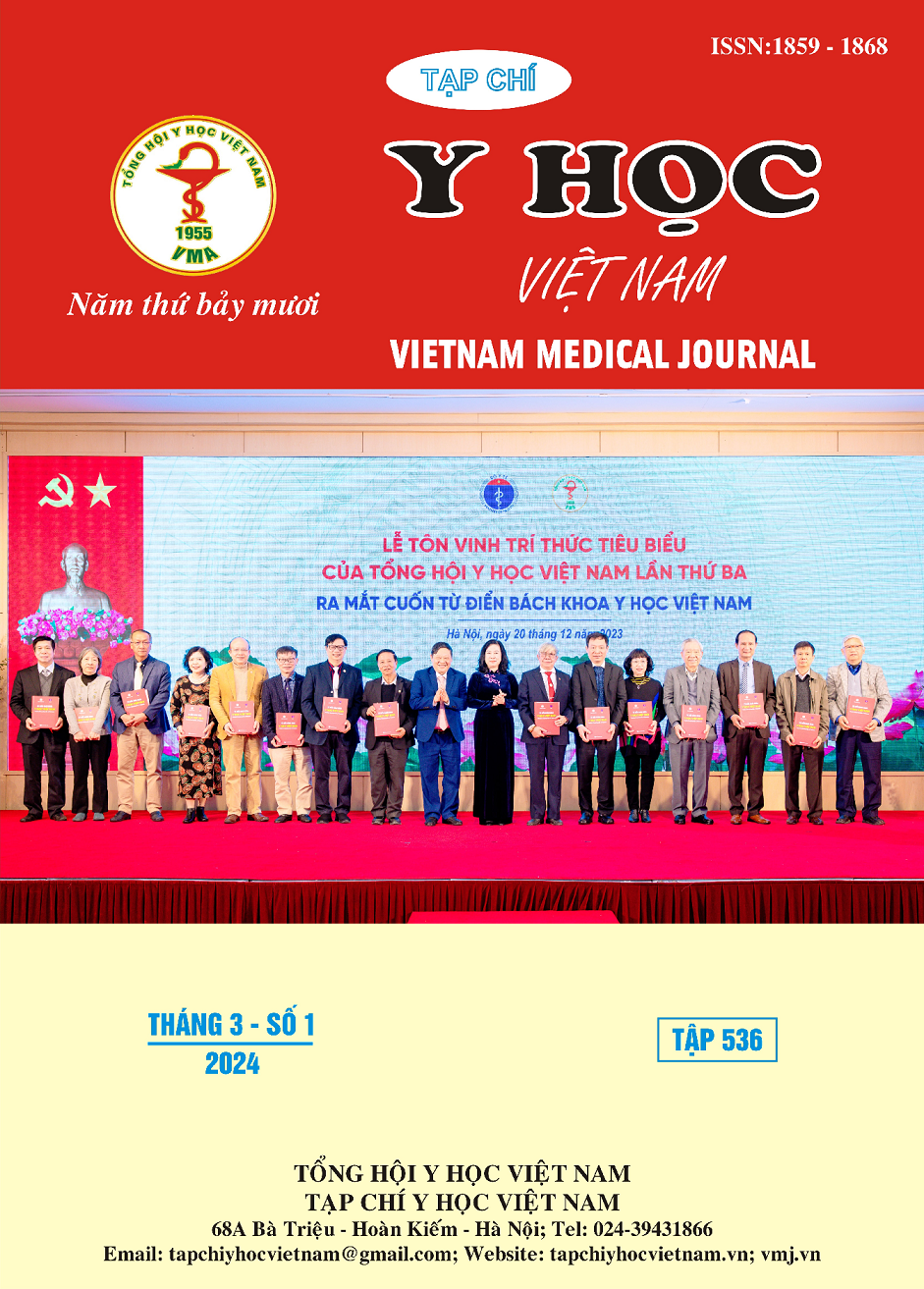EVALUATING DIABETIC RETINOPATHY RETINAL FUNDUS IMAGES AT NATIONAL GERIATRIC HOSPITAL
Main Article Content
Abstract
Background: Diabetic retinopathy (DR) is a complication of progressive diabetic mellitus, capable of damaging retinal vessels, eventually leading to vision loss and even blindness. It is of great importance for diabetic patients to receive appropriate primary health care and early systematic screening in the community to prevent vision loss. The purpose of this study was to evaluate the application value of an AI-based diagnostic system for DR screening and determine the associations between diabetic retinopathy and systemic risk factors. Methods: Diabetes mellitus (DM) patients in National Geriatric Hospital from January 2021 to October 2023 were selected as the target population. A total of 306 eyes of 153 DM patients were enrolled in this screening. The patients included 63 males and 90 females, with an average age of 25–88 years (64, 84±10,03 years). All fundus photographs were collected by ophthalmologists. The Cybersight AI-based diagnostic system and ophthalmologists were tasked with diagnosing the photos independently. The sensitivity and the specificity of the AI-based diagnostic system in diagnosing DR were calculated. Results: The prevalence rates of DR was 68,6%. 31,4% of patients had no retinopathy, 28,1% of patients had mild non-proliferative DR, 21,9% of patients had moderate non-proliferative DR, 12,7% of patients had severe non-proliferative DR and 5,6% of patients had proliferative DR. The risk of developing DR in the group with diabetes over 10 years is 2,15 times higher than in the group with diabetes for 10 years or less (p < 0.05, 95% CI = 1,04 – 4,45). The risk of developing DR in group with blood glucose of 7 mmol/l or higher is 3.58 times higher than groups with blood glucose of 7 mmol/l or less (p < 0.05, 95%CI = 2,14-10,21). The association between hypertension, hyperlipidaemia and diabetic retinopathy were not statistically significant. The sensitivity and the specificity of AI system for any DR, non-proliferate DR, proliferate DR, referable DR were 92,9% and 87,5%, 80,3% and 88,5%, 94,1% and 92%, 95,1% and 82%, respectively. The sensitivity and the specificity of AI system for microaneurysms, retinal haemorrhages, hard exudatives were 99% and 81,3%, 88,6% and 81,2%, 96,3% and 83,8%, respectively. Conclusion: Longer duration of diabetesis, poorly controlled diabetes wewe associated with increased prevalence of DR. The association between hypertension, hyperlipidaemia and diabetic retinopathy were not statistically significant. Cybersight AI system shows clinically acceptable performance in detecting diabetic retinopathy.
Article Details
References
2. Lê Thị Hiền. Đánh Giá Đặc Điểm Lâm Sàng Bệnh Võng Mạc Đái Tháo Đường Tại Bệnh Viện Đa Khoa Tỉnh Hòa Bình. Luận văn Bác sĩ chuyên khoa cấp II; 2020.
3. Heijden AA van der, Abramoff MD, Verbraak F, Hecke MV van, Liem A, Nijpels G. Validation of automated screening for referable diabetic retinopathy with the IDx-DR device in the Hoorn Diabetes Care System. Acta Ophthalmol (Copenh). 2018;96(1):63-68.
4. Home, Resources, diabetes L with, et al. IDF Diabetes Atlas | Tenth Edition. Accessed September 7, 2023. https://diabetesatlas.org/
5. Global report on diabetes. Accessed July 4, 2022. https://www.who.int/publications-detail-redirect/9789241565257
6. Rajalakshmi R, Subashini R, Anjana RM, Mohan V. Automated diabetic retinopathy detection in smartphone-based fundus photography using artificial intelligence. Eye. 2018;32(6):1138-1144.


